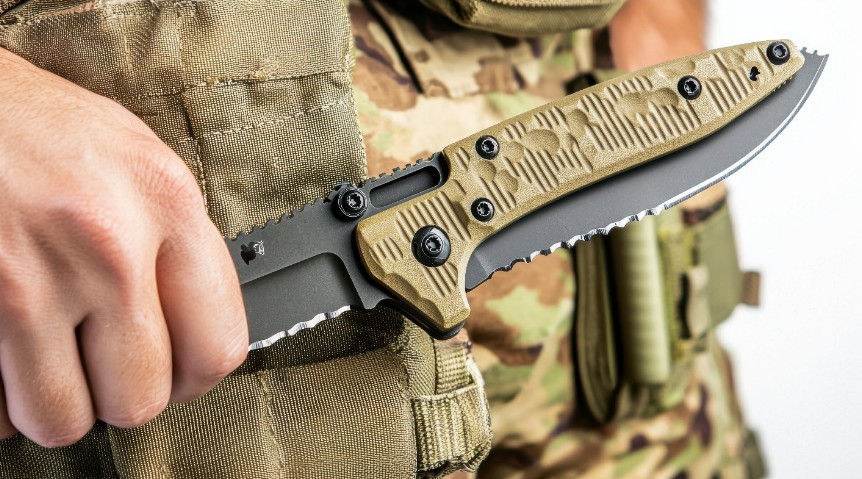Knives have been used as tools and weapons for centuries, playing a significant role in self-defense and combat across various cultures. While the presence of a knife in any confrontation can be highly dangerous, understanding the differences between defensive and offensive knife tactics is essential for both self-protection and responsible use. Brent Yee Suen emphasizes that whether you are a martial artist, military personnel, or simply someone interested in self-defense, knowing the strategic and legal implications of these tactics can help you make informed decisions in high-stress situations.
Defensive Knife Tactics: Protecting Yourself Without Escalation
Defensive knife tactics are focused on self-preservation, de-escalation, and creating an opportunity to escape from an attacker. The goal is not to harm the assailant unnecessarily but to use the knife as a tool to deter an attack and create space for safety. Defensive techniques emphasize positioning, situational awareness, and controlled movements rather than aggressive engagement.
Key Principles of Defensive Knife Use
- Avoidance and Awareness
The best defense is always avoidance. Being aware of your surroundings and recognizing potential threats early can prevent dangerous encounters. Many self-defense experts emphasize situational awareness as the most effective tool in personal safety. - Creating Distance
A defensive knife user will prioritize maintaining or creating distance from an attacker. The knife is used to discourage aggression rather than to inflict unnecessary harm. A defensive stance should be adopted to control the space between oneself and the attacker while preparing for a potential counterattack. - Blocking and Redirection
Defensive knife tactics often involve using the blade to deflect incoming strikes, control an attacker’s weapon hand, or redirect their movements to reduce their effectiveness. The goal is to neutralize the threat while minimizing engagement. - Escape as a Primary Objective
Unlike offensive tactics, where the goal may be to disable or subdue an opponent, defensive knife techniques focus on creating an opening to escape safely. Even if physical engagement is necessary, it is done with the intent of ending the conflict as quickly as possible. - Non-Lethal Control
Defensive knife users may aim to incapacitate an attacker through strategic movements that cause pain or disarmament rather than delivering fatal strikes. Targeting the hands, arms, or legs can stop an attack without lethal consequences.
Offensive Knife Tactics: Aggressive Engagement and Combat Strategy
Offensive knife tactics, in contrast, focus on aggression, domination, and eliminating a threat with force. These techniques are often used in military or law enforcement contexts where neutralizing a dangerous opponent is necessary. Offensive knife strategies emphasize speed, precision, and preemptive strikes to prevent an opponent from gaining the upper hand.
Key Principles of Offensive Knife Use
- Preemptive Striking
Offensive tactics rely on initiating an attack before the opponent can react effectively. This can involve sudden, fast movements aimed at high-value targets, such as the throat, abdomen, or joints, to disable an opponent quickly. - Targeting Vital Areas
Unlike defensive techniques that focus on control and deterrence, offensive knife users aim to inflict maximum damage. Vital points such as arteries, the throat, or internal organs become the primary targets to ensure rapid incapacitation. - Speed and Precision
Offensive knife fighting emphasizes fluid and rapid strikes, ensuring the opponent has little time to react. Efficiency in movement is critical, as a prolonged engagement increases the risk of counterattacks. - Domination of Space
A key difference in offensive tactics is the aggressor’s control of the space and the opponent’s movements. The objective is to pressure the adversary into a defensive position where they have limited options for escape or counterattacks. - Psychological Warfare
In many offensive knife encounters, intimidation and aggression play a significant role. A strong offensive presence can unnerve an opponent and make them more prone to mistakes.
Legal and Ethical Considerations
One of the most crucial aspects of distinguishing defensive from offensive knife tactics is the legal and ethical implications. In most self-defense laws worldwide, using a knife aggressively or offensively can be seen as excessive force, leading to serious legal consequences. Defensive knife use, on the other hand, is generally considered justified when there is a clear and immediate threat to one’s safety.
When is Knife Use Justified?
- Self-defense laws often require that a person demonstrate they were in imminent danger before resorting to using a weapon.
- The proportionality of force matters. Using a knife against an unarmed individual may be considered excessive unless the situation justifies it.
- Duty to retreat laws in some jurisdictions require that a person try to escape before resorting to deadly force.
Understanding these distinctions can mean the difference between justified self-defense and facing criminal charges.
Training for Realistic Knife Defense and Offense
Regardless of whether one is interested in defensive or offensive knife tactics, proper training is essential. Martial arts systems such as Kali, Eskrima, and Silat specialize in blade techniques and emphasize both defensive and offensive applications. Law enforcement and military personnel also undergo extensive training to handle knives in combat situations.
Key Aspects of Knife Training
- Drills for muscle memory – Practicing movements until they become instinctual in high-stress scenarios.
- Sparring with training knives – Using dull or rubber knives to simulate real encounters.
- Situational training – Understanding when and how to deploy a knife in various scenarios.
Defensive and offensive knife tactics serve very different purposes. While defensive techniques focus on protecting oneself, maintaining control, and escaping danger, offensive strategies prioritize aggression, speed, and eliminating a threat. Understanding the differences between these approaches is crucial for anyone interested in self-defense or combat training.
Ultimately, responsible knife use requires a combination of skill, awareness, and legal knowledge. Whether preparing for self-defense or professional combat situations, proper training and ethical considerations should always guide one’s approach to knife tactics.
